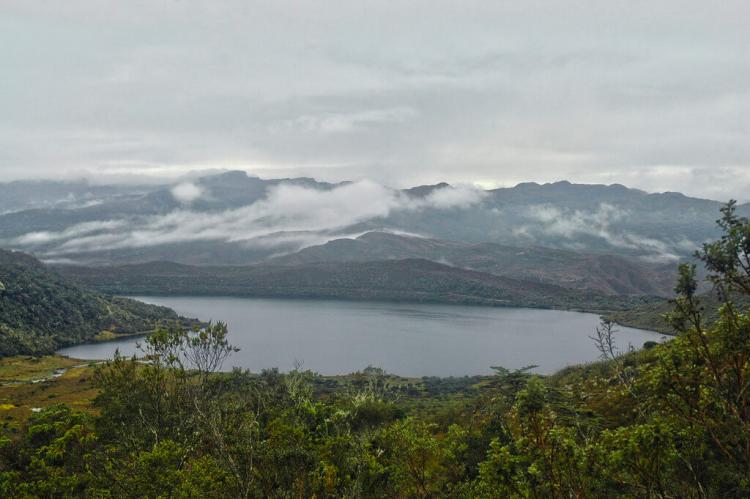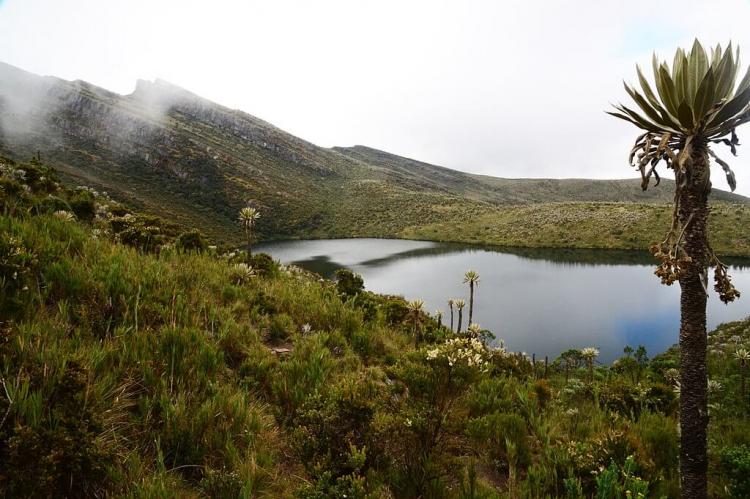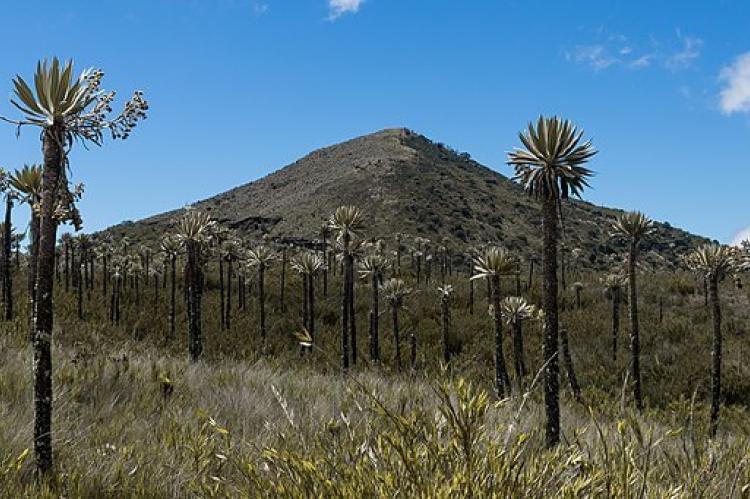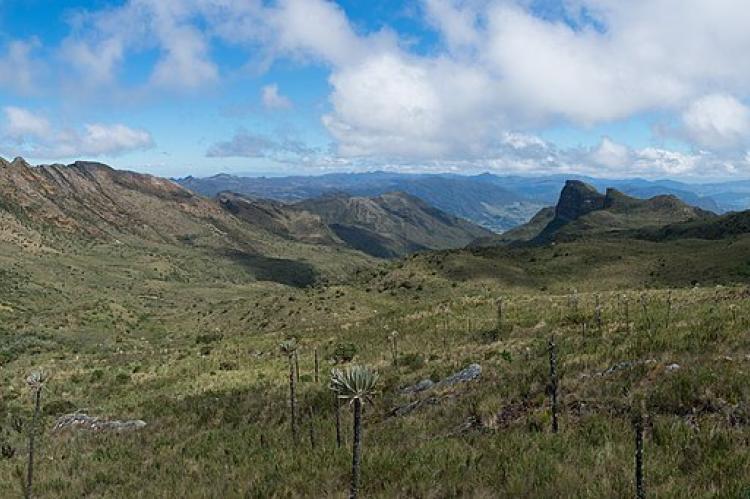Chingaza National Natural Park (Colombia)
Chingaza National Natural Park is in the Cordillera Occidental of the Colombian Andes. Situated within the Orinoco River basin, it contains numerous natural glacial lakes and is an important source of drinking water.
Chingaza National Natural Park
Chingaza National Natural Park is located in the Andean Natural Region of Colombia. It is situated in the Cordillera Occidental (eastern range) of the Colombian Andes, east of the Altiplano Cundiboyacense and northeast of Bogotá. Elevations range between 800 m (2,600 ft) to 4,020 m (13,190 ft) asl.
The protected area covers approximately 76,600 ha (189,000 acres) and is almost exclusively within the Orinoco River basin. About 1% of its area is situated in the Magdalena River basin. It extends over seven Cundinamarca and four Meta municipalities.
Chingaza National Natural Park contains over 40 natural glacial lakes, the largest of which is Laguna Chingaza in the southwestern part of the park, at an altitude of 3,250 m (10,660 ft) asl. Other significant bodies of water are the Siecha Lakes, a group of three lakes in the municipality of Guasca.
Chuza Reservoir is also located here, in the basin of a tributary of the Guatiquía River. This reservoir is the center of the Bogotá Water Company's Chingaza System and contributes 80% of the city's drinking water.
Biology
Chingaza National Natural Park is located within the Tropical Andes region. High Andean, sub-Andean forest and moorland ecosystems are predominant in the area, havens for flora and fauna.
The fauna found within the park includes the spectacled bear, deer, tapirs, pumas, Andean condors, Cock-of-the-rocks, jaguars, turkeys, woolly monkeys, nocturnal monkeys, ocelots and toucans. In addition, many endemic species make the Cordillera Occidental one of Colombia's most critical geographic regions for wildlife.
In the vicinity of Chingaza Lake, approximately 383 species of plants have been recorded. However, it is estimated that the total flora of the park may exceed 2,000 species. Eight species of peat moss can absorb up to 40 times their weight in water. Endemic species, such as frailejones, grow on the páramo and sometimes within forests.
Culture
The Chingaza area has historical importance, with over 10,000 years of Muisca and pre-Muisca inhabitation in the region. Ponds, rock shelters, the mountains and the Siecha Lakes were sacred places of worship and respect, forming ceremonial centers.





